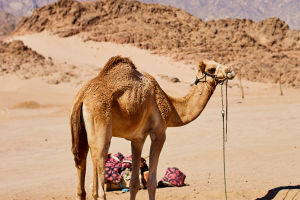Rabbits are adorable creatures, and their soft fur brings boundless joy to people.
However, rabbits require proper coat care to maintain their health and beauty like any other pet.
This comprehensive guide will delve into the essential practices for effectively caring for your rabbit's coat to ensure your bunny looks stunning.
Part One: Understanding Rabbit Hair Types
Rabbit hair can be broadly categorized into two types: downy and long hair. The short, dense down covers the rabbit's body, regulating body temperature and preventing moisture loss.
Conversely, long hair is soft and glossy, typically found around the rabbit's neck, ears, and tail, providing both adornment and protection.
Part Two: Daily Care Tips
1. Grooming: Utilize a specialized rabbit comb or a soft brush to groom your rabbit's hair at least once a week. This routine helps eliminate impurities, dead skin cells, and loose hair, thereby enhancing blood circulation and maintaining the health and shine of the coat.
2. Clean the Rabbit Hutch: Maintaining cleanliness in the rabbit hutch is pivotal for ensuring the well-being of your rabbit's coat. Regularly changing the bedding within the cabinet and upholding a dry, hygienic living environment can prevent the onset of skin ailments and hair-related issues.
3. Bathe Infrequently: Generally, rabbits do not require frequent bathing, as excessive washing can strip their skin and coat of natural oils, leading to dryness and lackluster fur. If your rabbit's coat becomes soiled or malodorous, opt for a gentle wash using specialized rabbit shampoo while avoiding prolonged soaking.
4. Dietary Considerations: The health and condition of a rabbit's coat are closely linked to its dietary intake. Ensure your rabbit has access to clean water and high-quality rabbit food daily, supplementing with fresh vegetables and grass appropriately to promote a lustrous and supple coat.
Part Three: Special Care Precautions
1. Managing Hair Loss: Rabbits may undergo seasonal shedding or experience hair loss during hormonal fluctuations, a natural process. During these periods, increase the frequency of grooming sessions to facilitate smooth shedding and mitigate the risk of ingesting excess fur.
2. Preventing Tangles: Long-haired rabbits are susceptible to hair tangling, particularly around the neck and ears. Regularly inspect and gently detangle the hair to forestall matting, which can precipitate skin issues.
3. Monitoring Skin Health: Routinely examine your rabbit's skin for signs of redness, swelling, moisture, or any other abnormalities. Promptly seek veterinary attention upon detecting irregularities to forestall the progression of skin ailments.
4. Moderate Clipping: Exercise caution when trimming your rabbit's hair, avoiding excessive Clipping unless necessary. Over-trimming can compromise the integrity of the skin, predisposing it to infections and other health complications.
Conclusion
Caring for a rabbit's coat demands patience and diligence, but the rewards are manifold. With conscientious care, you can uphold the health and beauty of your bunny's coat, enhancing its overall quality of life and happiness.
Remember to shower your rabbits with ample love and care; they will undoubtedly enrich your life as cherished companions.


